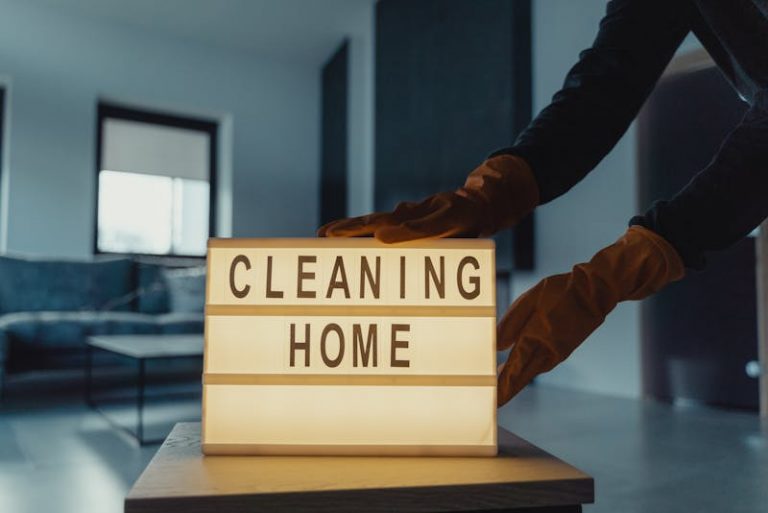

According to the Commercial Building Consumption Survey, commercial building floor space is rising. The square footage has increased by 11% compared to the number of buildings, which is growing at 6%. The U.S Energy Information Administration data show there are 5.9 million commercial buildings with a total of 97 billion cubic square feet. If you own or manage one of the commercial buildings in the U.S, you appreciate how important it is to do maintenance and repair.
There’re multiple approaches to maintenance, but some property managers find themselves always reacting to breakdowns, cracks, and dysfunctional fixtures. Yet with a commercial building maintenance plan, you can schedule inspections and checks to detect and prevent problems before they arise. Asset managers in other fields, including oil and gas, also use maintenance plans to keep assets in good shape.
But how do you create a commercial building maintenance plan? While you might not do the actual maintenance work, you can create a plan that guides the users on what to maintain, when, and how. You will learn some valuable tips to incorporate when creating a maintenance plan for your building.
Why Do You Need a Building Maintenance Plan?
Do you need a building maintenance plan? Can’t you do maintenance based on needs? A commercial building maintenance plan will help you prioritize goals. While ideally, you could do maintenance on every building feature simultaneously, one feature might require more attention and resources than others.
A maintenance plan will also help you schedule work orders. For example, it will highlight when to do roofing maintenance. Thus, it is easier to refer to a plan than act spontaneously. Repair and maintenance are more straightforward and replicable. A maintenance plan can be quite effective if you automate it.
Types of Maintenance Approaches

Before creating a commercial building maintenance plan, you should learn about the different approaches maintenance can take. One of the most common approaches is reactive maintenance(RM). Property managers allow an asset to run down to failure before repairing or replacing the asset. For example, you can leave a shaky door unattended until it falls off completely.
The other approach is preventive maintenance (PM). You schedule maintenance to inspect and repair assets in working condition. For example, you can schedule an HVAC inspection each year. PM is efficient and cost-saving because it prevents unexpected failures.
A maintenance plan will help you prevent significant issues in your building, such as water shortages, electrical fires, and unattended landscapes. While PM may have significant advantages over RM, you shouldn’t rule out RM altogether. Sometimes it makes financial sense to allow an asset to run down to failure.
A maintenance plan uses the preventive maintenance approach, such as each work order being scheduled at definite intervals. The intervals are informed by historical data, the manufacturer’s manual, and observation. If you follow your maintenance plan, you might never have to do reactive repairs.
Creating a Building Maintenance Plan: 10 Tips
Your commercial building exists to provide value to its users and generate revenue. Planning for maintenance will prevent the deterioration of your building while making its users comfortable. Yet planning for maintenance can seem arduous and overwhelming. You can make maintenance less spontaneous and reactive by using the following ten tips to create a commercial building maintenance plan.
1. Perform Inventory

You can’t begin building maintenance without knowing the necessary assets. You may know some aspects of your building that require maintenance, such as your commercial dehumidifier or elevator systems. Other features are less visible, and you might be unaware they are not operational until it’s too late.
You can go floor by floor, logging all assets needing maintenance. Have a table or software system to log in the asset, its purpose, and frequency for maintenance. For example, you could jot down the number of industrial doors you have and the scheduled date for maintenance. You could also note any building feature that requires immediate repair or remodeling.
You can do inventory with an employee more versant with the commercial building, especially if it’s big, such as a small hospital facility or a multi-level shopping complex. Don’t forget the less visible features, such as electrical wiring and drainage systems.
2. Establish Priorities
When it comes to maintenance, some aspects have higher priority depending on time, the purpose of a building feature, and the cost of maintenance versus replacement. For example, during winter, commercial snow removal might be a priority over remodeling the guest lounge. Because of budget and time restraints, you may have to have a priority list for maintenance.
Consider the expected ROI of maintaining a certain feature when setting priorities in your maintenance plan. For example, according to Homelight, regular lawn maintenance will give you 267% ROI. Other maintenance projects will give less than 50% ROI. So, ensure the value received after maintenance outweighs the cost of maintenance.
Another way to set priorities in your maintenance plan is to consider the impact of a building feature running to failure or not working. For example, if you don’t maintain the elevator and it fails, what impact will it have on the usability of your building? Begin with aspects with the greatest distraction potential.
3. Establish Frequency of Maintenance
Determining maintenance frequency is not an exact science. Further, a building has so many different features you cannot use the same approach. It’s best to consult skilled technicians for areas you are unsure about.
If you have mechanical or electrical appliances such as a commercial water heater, you can refer to the manufacturer’s manual. Other long-term features, such as asphalt roofing, have longer maintenance intervals, such as yearly or every three years. You could also refer to historical data. For example, how frequently have you maintained the paving in the past?
A maintenance plan doesn’t have to be preventive, at least in the beginning. You could observe how frequently a feature requires maintenance and then draft a plan. For example, how long does it take for your lawn to grow to undesirable levels?
4. Organize Maintenance Tasks With a Software System

Automating processes is becoming a must-have for each business. According to Analytics Insights, 80% of businesses will integrate intelligent automation into their processes by 2025. You could also consider automating when creating a commercial building maintenance plan.
Creating a maintenance plan includes developing work orders. For example, ‘Inspect and lubricate HVAC pumps annually.’ You could use maintenance software to create work orders for preventative maintenance at scheduled times. It’s also possible to include standard operating procedures so that maintenance is done the same way at all times.
Your automated building maintenance plan should include the scheduled time for maintenance and personnel. Some will allow you to set reminders and comment on the state of the asset. Automation will make it easier for you to know what needs maintenance and even make adjustments.
5. Plan for an Energy Audit
Commercial buildings in the U.S. account for 20% of all energy consumption. Yet, according to the U.S. Department of Energy, commercial buildings waste around 30% of the energy consumed. Optimizing operations and monitoring energy consumption can help you reduce energy consumption in your building.
An energy audit should be part of your maintenance plan because it can reduce energy costs, increase the efficiency of appliances and improve comfort for building users. So many aspects contribute to your energy consumption and waste. A maintenance plan can guide you through replacing less energy-efficient windows or doors with more efficient ones.
Commercial HVAC installation can help you reduce air conditioning energy costs by replacing old, dysfunctional ACs. You may also replace old inefficient bulbs with alternatives. It’s best to have a professional do the energy audit since they know what to target.
6. Plan for a Safety Audit
One of the fundamental reasons for maintenance is safety. Emergencies in commercial buildings often cause massive property damage and loss of human lives. Some emergencies are due to faulty building features and lack of maintenance. For example, according to the Insurance Information Institute, 24% of all fire losses happen in commercial buildings.
A safety audit should be part of the commercial building maintenance plan. The maintenance work order should include an inspection of emergency fixtures such as an emergency door, the state of sprinklers, and fire detector systems. Other features to include are emergency lighting and exit signs.
Some features may not necessarily be part of the emergency preparedness package. But they could improve safety and comfort in the building. For example, commercial ventilation services will improve circulation, which will be critical in emergencies.
7. Have a Checklist for Fixtures

When creating a maintenance plan for your commercial building, develop and use a checklist for plumbing and electrical fixtures. Although they look simple and low maintenance, leaving them damaged for an extended time can cause more damage, wastage, and higher repair or replacement costs.
According to the EPA, water-efficient fixtures and appliances can reduce water usage by 20%. Your maintenance work orders can include inspections of water pipes, drainage systems, and fixtures by a commercial plumber. Your plan can also include immediate maintenance and repair when a problem arises.
Electrical fixtures and appliances are also a priority in maintenance because of cost and safety considerations. Scheduled maintenance can help detect problems such as faulty wiring, broken connections, and excessive heating. Neglecting the maintenance of fixtures will leave your building looking dull and unattended.
8. Plan for Maintenance of Building Exteriors
When creating a commercial building maintenance plan, it’s easy to forget the exteriors, especially since most activity happens indoors. The exterior is what people see first when entering the building. For example, if your paint is chirped, people may not get the feeling you are a professional.
Exterior maintenance may include conducting a moisture survey on your commercial roofing to detect leaks. It may include inspecting outdoor lighting for loose screws and gaskets. You can inspect floors for emerging cracks and external walls for signs of damage.
The rule of thumb is to maintain your commercial building like you would your home. For example, don’t neglect the commercial garage doors if you can’t have chipped aging paint on your front home door. If anything, since your commercial building is bringing in income, maintenance should be a priority.
9. Don’t Forget Landscape Maintenance
You probably won’t forget landscaping. It’s one of the most prominent features when you enter the building. Landscaping has a high return on investment because it improves outdoor space’s curb appeal and usability. Include a work order on purchasing commercial landscape supplies and scheduled lawn care in your maintenance plan.
Part of the landscaping includes commercial paving and leveling. Maintenance on the driveway might include asphalt driveway repair. When creating a maintenance plan, include how frequently outdoor maintenance should be done, the costs, and the persons responsible. In the same way, you do an inventory of interiors, do one for outdoors.
10. Hire a Commercial Building Maintenance Company

Building maintenance is essential but labor-intensive work. You might need to outsource some processes, such as energy and safety audits. Others will be easier to pinpoint, such as landscaping needs. Your work can become quite efficient by hiring a commercial building maintenance company.
They have expert knowledge in creating a commercial building maintenance plan and implementing it. You can hand over all maintenance needs and only work with one manager. For roles that require outsourcing, such as commercial lawn care services, they will act as the link.
Maintenance is an essential part of operating a commercial building. It helps maintain the value of the building and keeps users comfortable and safe. Creating a commercial building maintenance plan will make it easy to ensure each building feature receives the right maintenance.
It’s essential to understand that maintenance is not an exact science, and you may not have a standard procedure to follow. However, once you draft a maintenance plan, you can start collecting data to inform your next maintenance. If the task seems arduous, you can hire a building management company to do maintenance for you.




